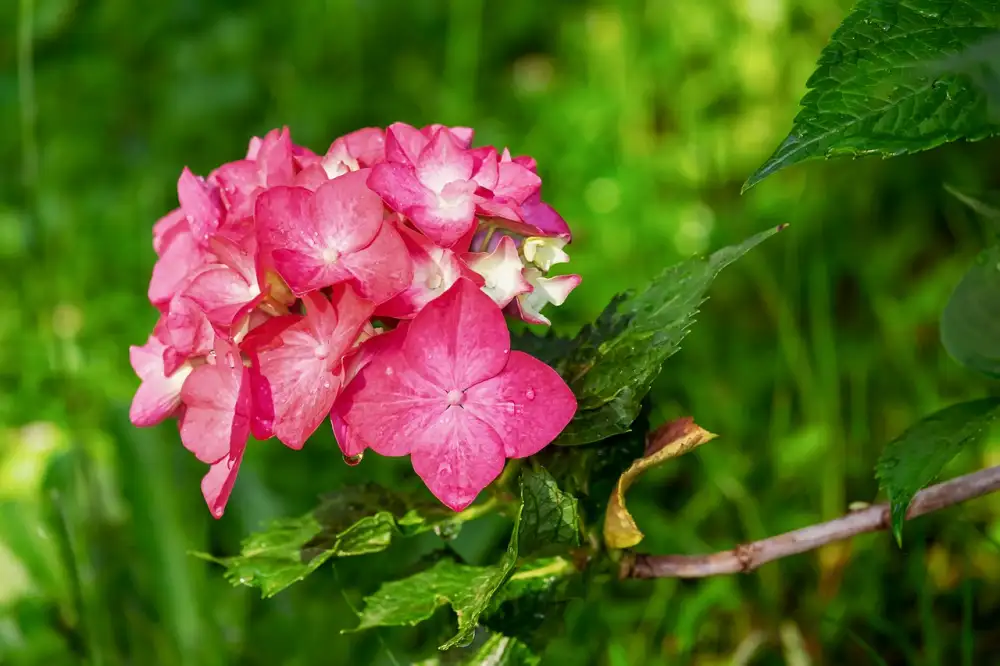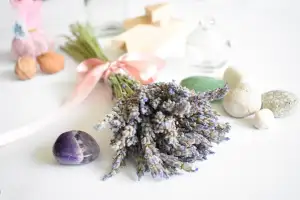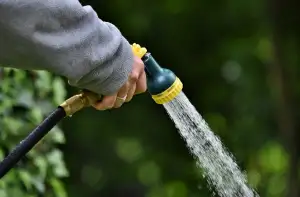Unlock the Secrets to Hydrangea Care: Essential Tips for a Thriving Home Garden

Hydrangeas are a popular choice for home gardens due to their stunning blooms and versatility. With the right care, these beautiful plants can thrive and bring joy to any garden. In this article, we will explore essential tips for hydrangea care, including choosing the right location, proper watering techniques, fertilizing for optimal growth, pruning for shape and health, protecting against pests and diseases, and overwintering tips. By following these guidelines, you can unlock the secrets to successful hydrangea care and enjoy their beauty in your home garden.
Choosing the Right Location for Hydrangeas
Choosing the right location for your hydrangeas is crucial for their growth and overall health. These beautiful flowering plants thrive in areas with partial shade, receiving about 4-6 hours of sunlight each day. Avoid planting them in direct sunlight as it can scorch the leaves and flowers.
Hydrangeas also prefer well-drained soil that is rich in organic matter. Ensure that the soil is moist but not waterlogged, as excessive moisture can lead to root rot. Consider adding compost or peat moss to improve the soil's fertility and drainage.
Additionally, it's important to select a location that provides protection from strong winds. Hydrangeas have delicate stems and large leaves that can easily be damaged by strong gusts. Planting them near a fence, wall, or other structures can help create a sheltered environment.
By choosing the right location for your hydrangeas, you are setting them up for success and ensuring they have the ideal conditions to thrive and produce stunning blooms.
Proper Watering Techniques for Hydrangeas
Proper watering is crucial for the health and vitality of hydrangeas. These beautiful plants require consistent moisture, but overwatering can be just as harmful as underwatering. The key is to find the right balance.
When watering hydrangeas, it's important to water deeply and thoroughly. This means allowing the water to penetrate the soil around the roots rather than just wetting the surface. A good rule of thumb is to provide about 1 inch of water per week, either through rainfall or manual watering.
To prevent water evaporation and ensure efficient absorption, consider mulching around your hydrangeas. Apply a layer of organic mulch, such as wood chips or shredded bark, around the base of the plant. This will help retain moisture in the soil and also suppress weed growth.
Timing is also important when it comes to watering hydrangeas. It's best to water them in the morning so that any excess moisture on leaves can dry off during the day. Avoid watering late in the evening as this can promote fungal diseases.
Keep an eye on your hydrangeas during hot summer months or periods of drought. If you notice wilting or drooping leaves, it's a sign that they need more water. Adjust your watering schedule accordingly, providing additional moisture when necessary.
Remember, every garden is unique, and factors like soil type and climate can affect how often you need to water your hydrangeas. Regularly check the moisture level by sticking your finger into the soil near the roots. If it feels dry about an inch below the surface, it's time to water.
By following these proper watering techniques, you'll help ensure that your hydrangeas receive adequate hydration for healthy growth and vibrant blooms all season long.
Fertilizing Hydrangeas for Optimal Growth
Proper fertilization is key to ensuring the optimal growth and health of your hydrangeas. These beautiful flowering plants have specific nutrient requirements that must be met in order for them to thrive.
When it comes to fertilizing hydrangeas, timing is crucial. It is best to apply a slow-release, balanced fertilizer in early spring, just as new growth begins. This will provide a steady supply of nutrients throughout the growing season.
Choose a fertilizer with a ratio of 10-10-10 or 12-4-8, which means it contains equal amounts of nitrogen (N), phosphorus (P), and potassium (K). These essential nutrients promote healthy foliage, strong root development, and vibrant blooms.
To apply the fertilizer, sprinkle it evenly around the base of the plant, avoiding direct contact with the leaves or stems. Gently work it into the soil using a garden fork or rake, being careful not to damage the shallow roots.
In addition to regular fertilization, consider supplementing with organic matter such as compost or well-rotted manure. This will enrich the soil and improve its overall fertility.
Remember that hydrangeas have different color variations depending on soil pH. To enhance blue blooms, add aluminum sulfate or sulfur to acidify the soil. For pink or red blooms, use lime to increase alkalinity.
Avoid over-fertilizing as this can lead to excessive foliage growth at the expense of flower production. Follow package instructions carefully and adjust accordingly based on your specific hydrangea variety and growing conditions.
By providing your hydrangeas with proper nutrition through timely fertilization, you can ensure they reach their full potential and reward you with an abundance of stunning flowers all season long.
Pruning Hydrangeas to Maintain Shape and Health
Pruning is an essential aspect of hydrangea care to maintain their shape and overall health. It helps promote new growth, improve air circulation, and prevent diseases. The timing and technique for pruning hydrangeas depend on the type of hydrangea you have.
For mophead and lacecap hydrangeas (Hydrangea macrophylla), it is best to prune them immediately after they finish flowering in late summer or early fall. Remove any dead or damaged wood, as well as any weak or crossing branches. Cut back the stems to just above a healthy set of buds.
For panicle hydrangeas (Hydrangea paniculata), which include varieties like 'Limelight' and 'PeeGee,' pruning can be done in late winter or early spring before new growth starts. Cut back the stems to about one-third of their height, leaving a framework for new growth.
Oakleaf hydrangeas (Hydrangea quercifolia) should be pruned in early summer after they finish flowering. Remove any dead or weak wood and shape the plant as desired.
Smooth hydrangeas (Hydrangea arborescens), such as 'Annabelle,' should be pruned in late winter or early spring. Cut back all stems to within a few inches of the ground.
Remember not to prune your hydrangeas too severely, as this can result in reduced blooming. It is always better to err on the side of caution and prune lightly if you are unsure.
Proper pruning techniques will help maintain the shape and health of your hydrangeas, ensuring that they continue to thrive year after year, providing you with beautiful blooms to enjoy in your home garden.
Protecting Hydrangeas from Pests and Diseases
Keeping your hydrangeas healthy also means protecting them from pests and diseases. Here are some essential tips to ensure your plants stay pest-free:
1. Regularly inspect your hydrangeas for any signs of pests such as aphids, spider mites, or scale insects. These tiny creatures can cause damage by sucking sap from the leaves and stems.
2. If you spot any pests, remove them manually or use a gentle spray of water to dislodge them from the plant. Avoid using harsh chemicals that may harm beneficial insects.
3. To prevent fungal diseases like powdery mildew or leaf spot, ensure proper air circulation around your hydrangeas by spacing them adequately and avoiding overcrowding.
4. Water your plants at the base rather than overhead to minimize moisture on the leaves, which can promote fungal growth.
5. Mulching around the base of your hydrangeas can help retain moisture in the soil while preventing weed growth that could compete for nutrients.
By following these simple steps, you can protect your hydrangeas from common pests and diseases, ensuring they thrive and bring beauty to your home garden.
Tips for Overwintering Hydrangeas
1. Mulch: Before the first frost, apply a layer of mulch around the base of your hydrangeas. This will help insulate the roots and protect them from extreme temperatures.
2. Protect from Wind: Strong winds can damage hydrangea branches and buds. Consider using a windbreak or creating a barrier with burlap to shield your plants from harsh gusts.
3. Watering: Hydrangeas still need water during winter, but be careful not to overwater as this can lead to root rot. Water sparingly, ensuring the soil remains moist but not saturated.
4. Pruning: Avoid pruning your hydrangeas in late fall or winter, as this can stimulate new growth that is vulnerable to frost damage. Wait until early spring when the danger of frost has passed.
5. Covering: If you live in an area with severe winters, consider covering your hydrangeas with a protective cloth or blanket during extremely cold nights.
By following these tips, you can ensure that your hydrangeas survive the winter months and come back strong and healthy in the spring, ready to fill your garden with their beautiful blooms once again.
In conclusion, with the right care and attention, hydrangeas can bring a burst of beauty to your home garden. By choosing the right location, providing proper watering techniques, fertilizing regularly, pruning for shape and health, protecting from pests and diseases, and overwintering correctly, you can ensure that your hydrangeas thrive. So go ahead and unlock the secrets to hydrangea care and enjoy the stunning blooms that will enhance the beauty of your home.
Published: 07. 12. 2023
Category: Home



